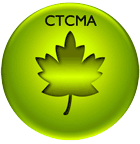Hight Cholesterol, Part 1
Course Sample
Another Sample for your convenience:
2. Dyslipidemia in Chinese Medicine
2.1 Fundamentals of Dyslipidemia in Chinese Medicine
Dyslipidemia is not a traditional disease classification in CM. Modern books on the subject of hyperlipidemia state that if falls within the scope of traditionally recognized conditions such as phlegm turbidity, phlegm dampness, turbid obstruction, obesity, etc, and that the main organs involved are the Spleen, Liver, Kidneys, and Heart.
It is of interest that most modern sources place dyslipidemia within the scope of traditionally recognized condition such as phlegm, turbidity, and dampness. Clearly, as discussed below, there are other mechanisms involved in the disorder, such as deficiency of yin, yang, qi, blood, and the organs, stagnation of qi and blood, etc. However, this may be due to the latter being more related to the etiology or pathomechanism of the disorder, and the former more related to the actual state of dyslipidemia. If this is true, it would imply that most modern authors consider pathogenic fluids (phlegm, turbidity, dampness) to be the main form in which elevated serum lipids present themselves. Whether it is true that all patients with dyslipidemia suffer from one or more type of pathogenic fluid, this author can’t say. Is it not possible for a dyslipdemia patient to present with pure yin deficiency, or some other pattern, and no discernible pathogenic fluids? The vast majority of modern literature seems to suggest not. However, throughout the rest of this course there are ideas that seem to suggest this may be possible, and ultimately, clinicians need to keep an open mind and flexibly approach each patient without preconceived notions about pattern diagnosis. This is especially true, at least in this author’s opinion, when those notions are formed around biomedically defined illnesses, such as pathogenic fluids and dyslipidemia in this case.
2.1.1 The Spleen and Dyslipidemia
Hyperlipidemia belongs to the traditional CM disease classification “phlegm turbidity”, for which there are essentially two causes. The first is termed “external”, and is due to irregular dietary habits (such as over-eating, eating at irregular times, or skipping meals), and excessive consumption of sweets, fatty foods, and/or alcohol, all of which can damage the Spleen and cause obstruction of the Spleen mechanism. The second is termed “internal”, and is due to dysfunction of the internal organs, insufficiency of Triple-Burner qi transformation, or dysfunction of Spleen circulation/transportation leading to an inability of the body to transform fats and descend turbidity. This results in the accumulation of fats, phlegm, turbidity, and stagnant blood in the blood vessels with subsequent obstruction of the blood vessels. Regardless of the cause, internal or external, both can lead to obstruction of Spleen transportation and transformation, the formation, accumulation, and stagnation of dampness, and the development of dyslipidemia.
Obstruction of Spleen Transportation is a Key Component in Dyslipidemia
Stagnation of phlegm dampness, obstruction of the Spleen mechanism, deficiency and weakness of Spleen qi, and accumulation of fats and turbidity are all major factors in the etiology of dylipidemia.
Neijing Suwen Chapter 21, Jingmai Bielun, states, “…drink enters the Stomach and the Stomach distributes the essence qi upwards to the Spleen. The Spleen distributes essence, going upward to the Lung, which regulates the waterways and sends the fluids down to the Urinary Bladder. (The Lung) distributes the water essence to the entire body and to the vessels of the five viscera…”. This clause explains the relationship between the Spleen’s function of distributing essence and the metabolism and distribution of body fluids, highlighting the Spleen’s important role in fluid metabolism. It can also help us understand the role of the Spleen in lipid metabolism.
Li Dong-Yuan said, “The Spleen and Stomach receive (food and drink), and then can cook, rot, and ripen the five grains. (If the clear qi does not ascend) the grain qi stagnates and flows downward, becoming dampness.” In this case, the Spleen is unable to distribute the essence, qi transformation is impaired, and normal body fluids become turbid dampness. In extreme cases the sticky turbidity causes blood stagnation, and obstructs the Heart vessels.
Additionally, weakness and deficiency of the Spleen and Stomach has an impact on the metabolism of dampness and lipids that already exist. Weakness of Spleen transportation and transformation means dampness and lipids that are already present in the blood are unable to be transformed and eliminated and remain in the blood. This dampness further impairs Spleen and Stomach transportation and transformation, leading to formation of more damp turbidity and an increase of serum lipids.
In clinic it is common to see overweight and obese patients with dyslipidemia, and in fact the vast majority of them suffer from deficiency of Spleen qi. These patients are usually considered to be suffering from “deficiency-type obesity”, a condition characterized by excess in the form of accumulation of pathogenic fluids, with underlying deficiency of Spleen qi. The typical patient is middle-aged or above, overweight, with symptoms such as dizziness with a heavy feeling in the head, stuffiness of the chest, abdominal fullness, nausea, fatigue, weakness, a pale tongue with a greasy white tongue-coating, and a thin, soggy pulse.
Note that while Spleen qi deficiency is characterized by poor appetite, there are many patients like this with strong appetite. This is often due to concurrent heat in the Stomach, which causes hunger. This condition is known as “strong Stomach, weak Spleen”, and is characterized by hunger (Stomach heat) but inability to eat much and/or bloating and distention after eating (Spleen weakness).
The Stomach in CM is responsible for receiving food and liquids after ingestion, and for “rotting and ripening” them before passing them on to the Spleen for further digestion. Because the Stomach is in charge of receiving food and liquid, when there is heat in the Stomach hunger is usually exaggerated. However, heat in the Stomach can take two forms. The first, Stomach yin deficiency, presents with a gnawing uncomfortable hunger, inability to eat much, and after eating there may be discomfort. The second, true heat or fire in the Stomach, presents with strong hunger and the ability to eat quite a bit, but after eating hunger returns rapidly, epigastric pain and/or burning, bad breath, bleeding gums, and hard, dry stool. In both types, thirst with a preference for cold drinks is present.
Spleen Deficiency and Dyslipidemia in Modern Research
From a biomedical perspective, the CM Spleen is closely related to the various organs and processes of the digestive system, and Spleen deficiency clearly includes weakness of digestive system function. Modern research shows that the Spleen is closely related to various receptors and enzymes in the body and that strengthening the Spleen can improve their functions, leading to acceleration of metabolic processes. Dysfunction of these receptors and enzymes is one of the main causes of dyslipidemia. Following are two representative studies.
Research by Xiong Wen-Sheng shows that regulating Spleen function and transforming phlegm can regulate lipid levels and has an effect upon enzymes involved in lipid metabolism. Lipoprotein lipase (LPL), a key enzyme in lipoprotein metabolism, catalyses the hydrolysis of the triacylglycerol component of circulating chylomicrons and very low density lipoproteins, thereby providing non-esterified fatty acids and 2-monoacylglycerol for tissue utilization. Abnormalities in LPL function have been found to be associated with atherosclerosis, chylomicronaemia, obesity, Alzheimer's disease, and dyslipidemia associated with diabetes, insulin resistance, and infection4. Xiong et al found that a Chinese herbal preparation called Regulate Spleen Transform Phlegm Reduce Lipids Pill significantly increased LPL activity (more so than fenofibrate) and lowered serum triglycerides.
(Chinese Characters Below will Visulalize Correctly In Browsers Loaded with Chinese Language)
Note: The Chinese characters will appear correctly in the course material even if your browser does not support it in this preview of the course material.
Regulate Spleen Transform Phlegm Reduce Lipids Pill (理脾化痰降脂片):
Fa Ban Xia 法半夏 Rhizoma Pinelliae Tematae
Bai Zhu 炒白术 Rhizoma Atractylodis Macrocephalae
Tian Ma 天麻 Rhizoma Gastrodiae
Ju Hong 橘红 Pars Rubra Epicarpii Citri Erythrocarpae
Fu Ling 茯苓 Sclerotium Poriae Cocos
Lai Fu Zi 莱菔子 Semen Raphani Sativi
Dan Shen 丹参 Radix Salviae Miltiorrizae
Ju Ming Zi 决明子 Semen Cassiae
Ze Xie 泽泻 Rhizoma Alismatis
Tai Zi Shen 太子参 Radix Pseudostellariae
Green Tea 绿茶 Camellia Sinensis
Research by He Ren shows that the method of strengthening the Spleen, dissolving phlegm, and transforming blood stasis can reduce levels of serum total cholesterol and triglycerides, and increase levels of HDL-C. The increase in serum HDL-C concentrations also leads to an increase in LPL activity, possibly explaining the reduction in serum triglycerides.
Learn more in the course material....







